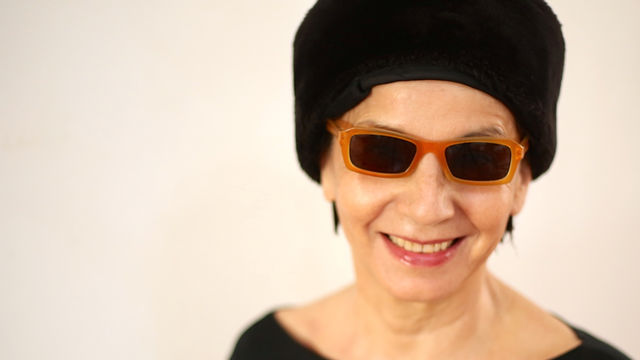
Eugenia Vargas Pereira
The photographer and performance artist Eugenia Vargas Pereira was born in Chillán, Chile, in 1949. After leaving Chile, where she was a music student, Vargas Pereira in 1969 moved to the United States, where she eventually studied photography in Bozeman, Montana. She stumbled upon the medium by chance after volunteering to be a photographer for a Canadian theater company. Vargas Pereira has described her time in the United States in the 1970s as the period when she encountered the feminist movement, which empowered her to take agency over her body and to employ it in her art. According to Vargas Pereira, "without feminism, my work does not exist."#
From 1984 to 1985 she lived in San Juan, Puerto Rico, and in 1985 she moved to Mexico City. In the mid-1980s and early 1990s she initiated a series of self-portraits in staged photographic tableaux incorporating body and performance art. Practicing what is known as directorial photography, she has created stage design installations that serve as backdrops to the actions performed and directed by her in front of the camera. This approach to photography was not well received in Mexico, especially by the male members of the Consejo Mexicano de Fotografía, who refused to consider her work as photography. Nevertheless, Vargas Pereira continued making photographs that often show her nude body covered in or utilizing such props as organic material—mud, straw, animal viscera—to suggest ideas of life, birth, environmentalism, and feminism.
She usually includes her photographs as one component in her installation works. In Aguas (Waters, 1991), for example, Vargas Pereira created a darkroom in which she suspended from the ceiling fifty-five amber-colored lightbulbs; submerged fifty-five photographs in photographic trays filled with water, which slowly degraded the images by removing the emulsion; and hung on the walls fifty-five photographs of the Lerma River, one of the most important sources of water in Mexico. The toxic nature of the chemicals used in the process of photographic development served as a metaphor for the high levels of pollution and contamination found in the waterway.
In her most recent work she has focused her attention on the mechanisms of media advertising and the use of imperceptible codes that create new stereotypes in the depiction of women. Her work has been exhibited in various art arenas, such as the Venice Biennale (1992) and the Photography Biennial (2003) in Rotterdam, Netherlands, in which she represented Chile. Additionally, her work is in the collections of the Ludwig Forum für Internationale Kunst, Aachen, Germany; Santa Barbara Museum of Art, CA; University Art Museum, California State University, Long Beach; San Antonio Museum of Art, TX; Centro de la Imagen, Mexico City; and in private collections in Europe, the United States, and Latin America.
—Marcela Guerrero
Selected Solo Exhibitions
1985 Re-tratos, Museo de Historia, Antropología y Arte, Universidad de Puerto Rico, San Juan
1990 Eugenia Vargas: Gran Formato, Galería de Arte Contemporáneo, México
1991 Aguas, University Art Museum, California State University, Long Beach
1996 Poder de actos de dominio irrevocable, Milagros Art Gallery, San Antonio, TX
2002 Eugenia Vargas: The Longest Day of the Year, Ambrosino Gallery, Miami
Selected Bibliography
Christophel, Joan, Edward G. Leffingwell, and Keith Carter. The River Pierce: Sacrifice II, 13.4.90; A Document of the Collaborative Action by Michael Tracy, Eugenia Vargas Daniels, and Eloy Tarcisio. San Ygnacio, TX: River Pierce Foundation, 1992.
Conger, Amy, and Elena Poniatowska. Compañeras de México: Women Photograph Women. Riverside, CA: University Art Gallery, University of California, 1990.
Du Pont, Diana C. Eugenia Vargas. Long Beach: University Art Museum, California State University, 1991.
Eugenia Vargas: Fotografías e instalación. Mexico City: Galería de Arte Contemporáneo, 1992.
Katz-Freiman, Tami. The Abject Body: A Site-Specific Installation. Miami: Miami-Dade Community College, 1999.


